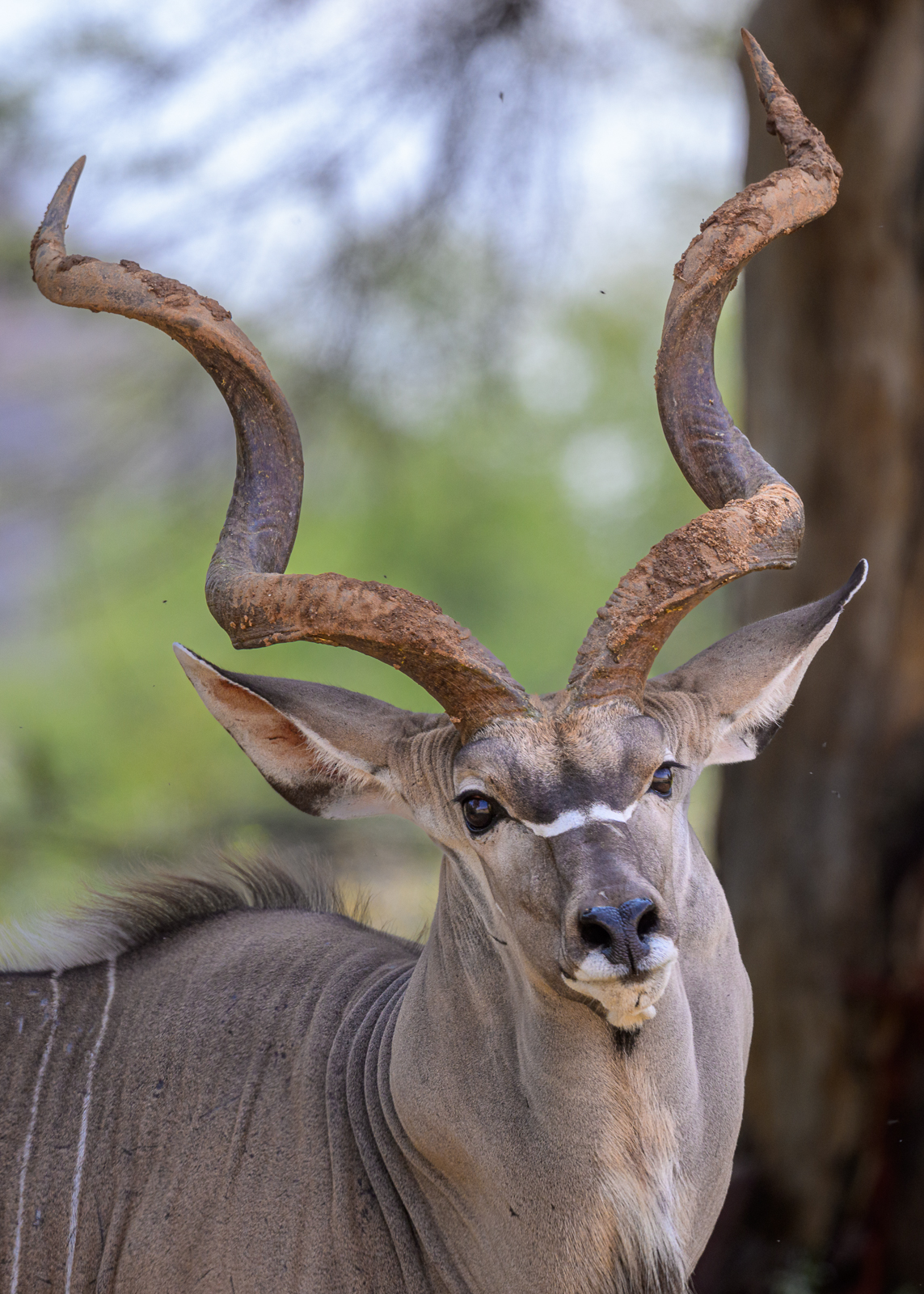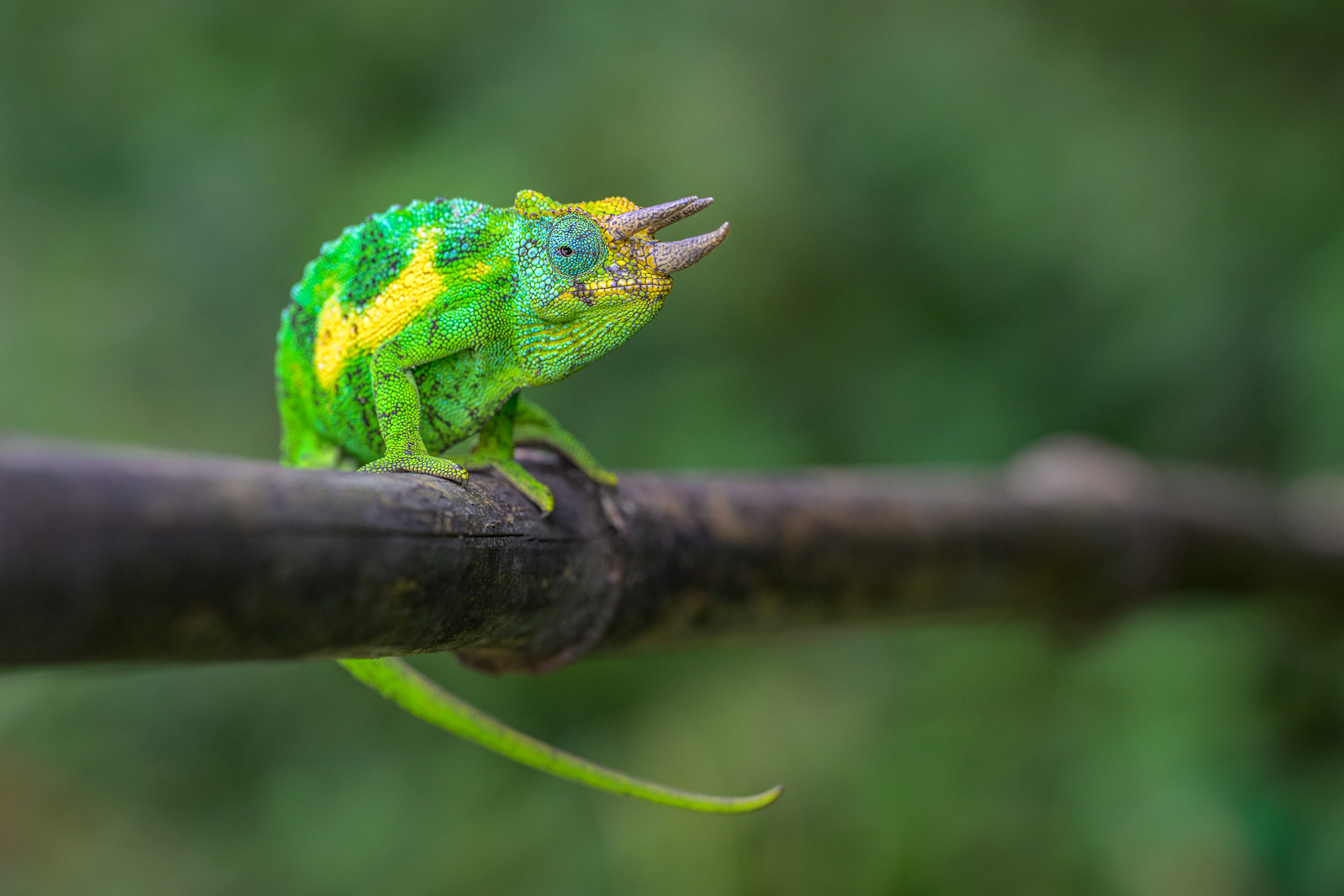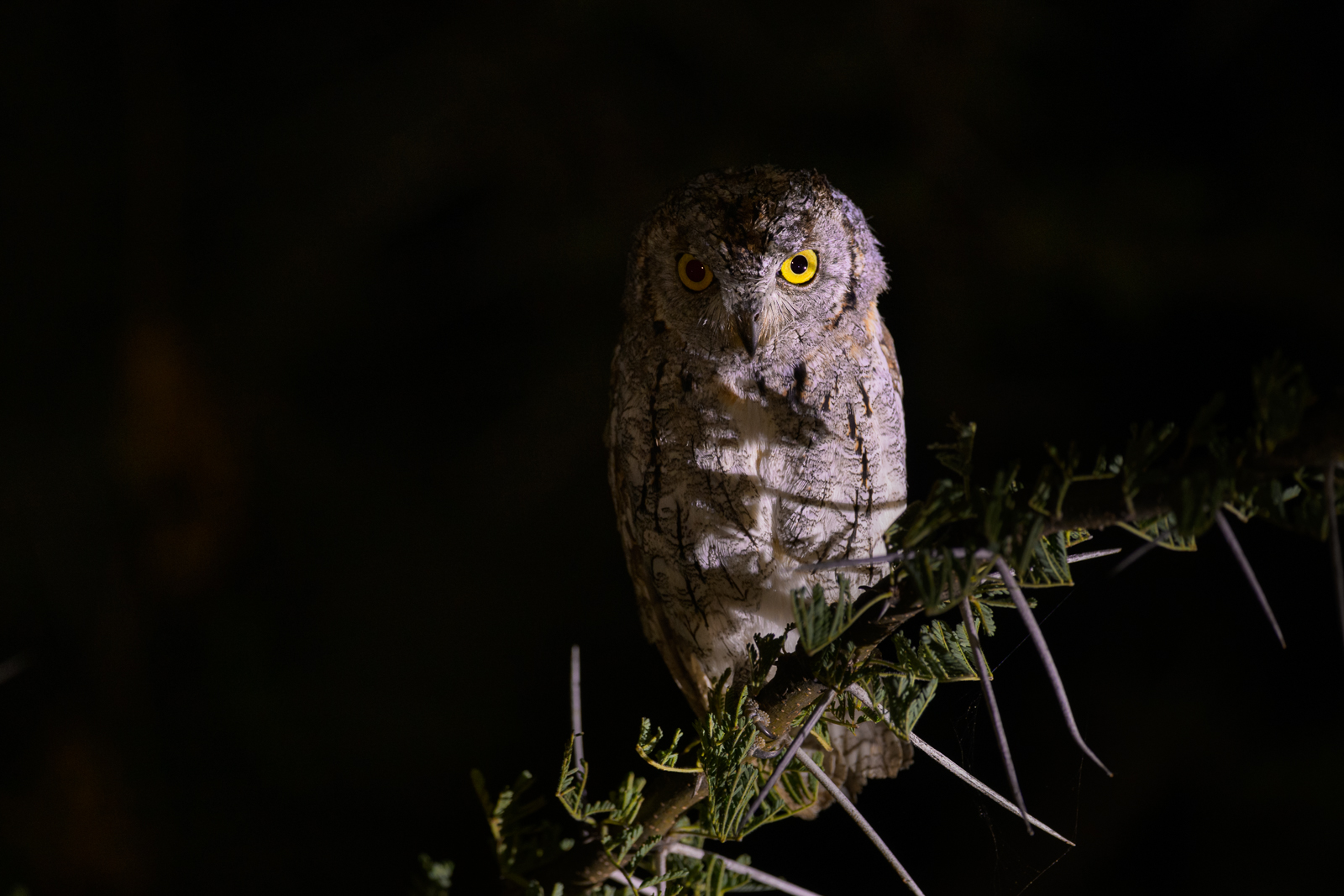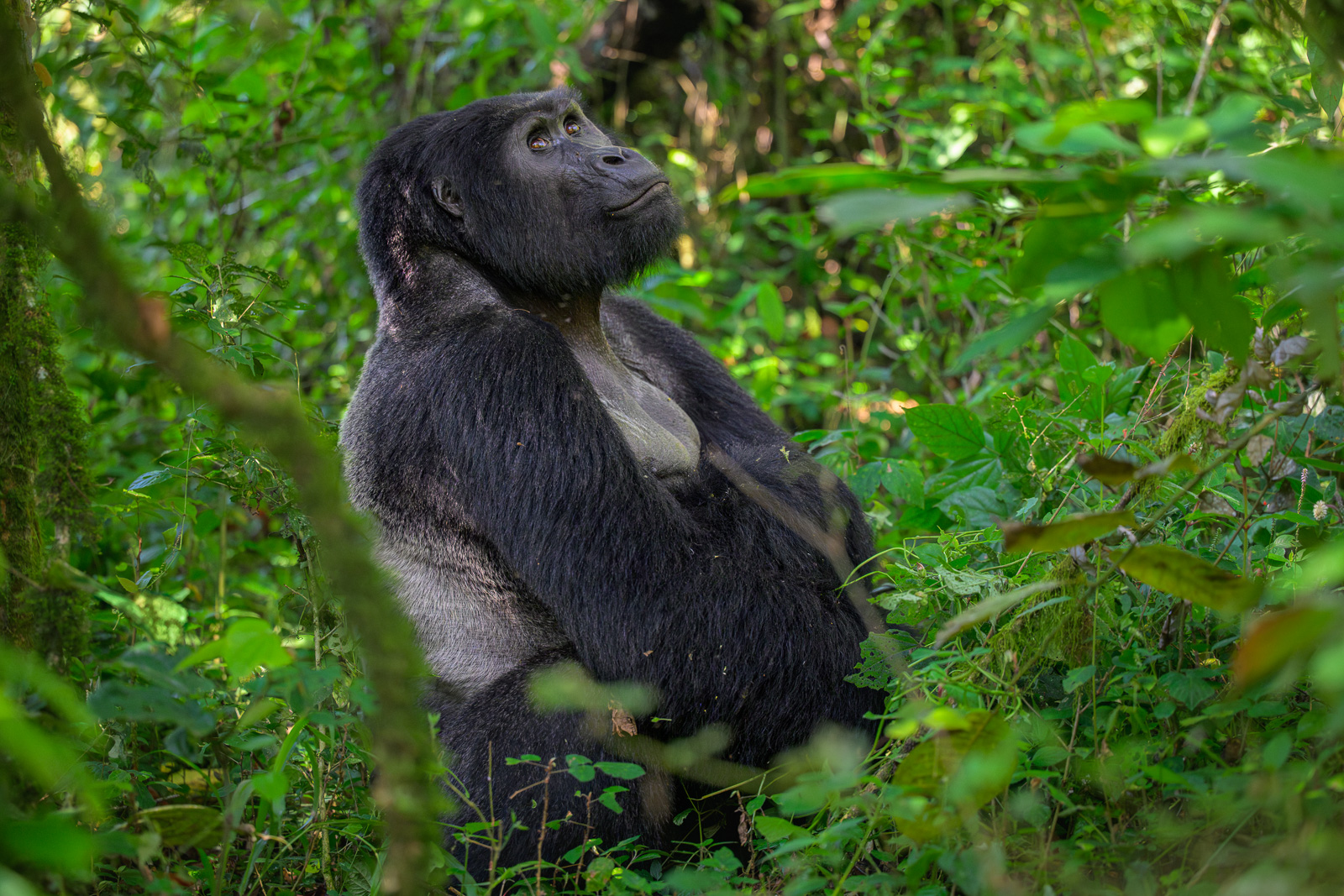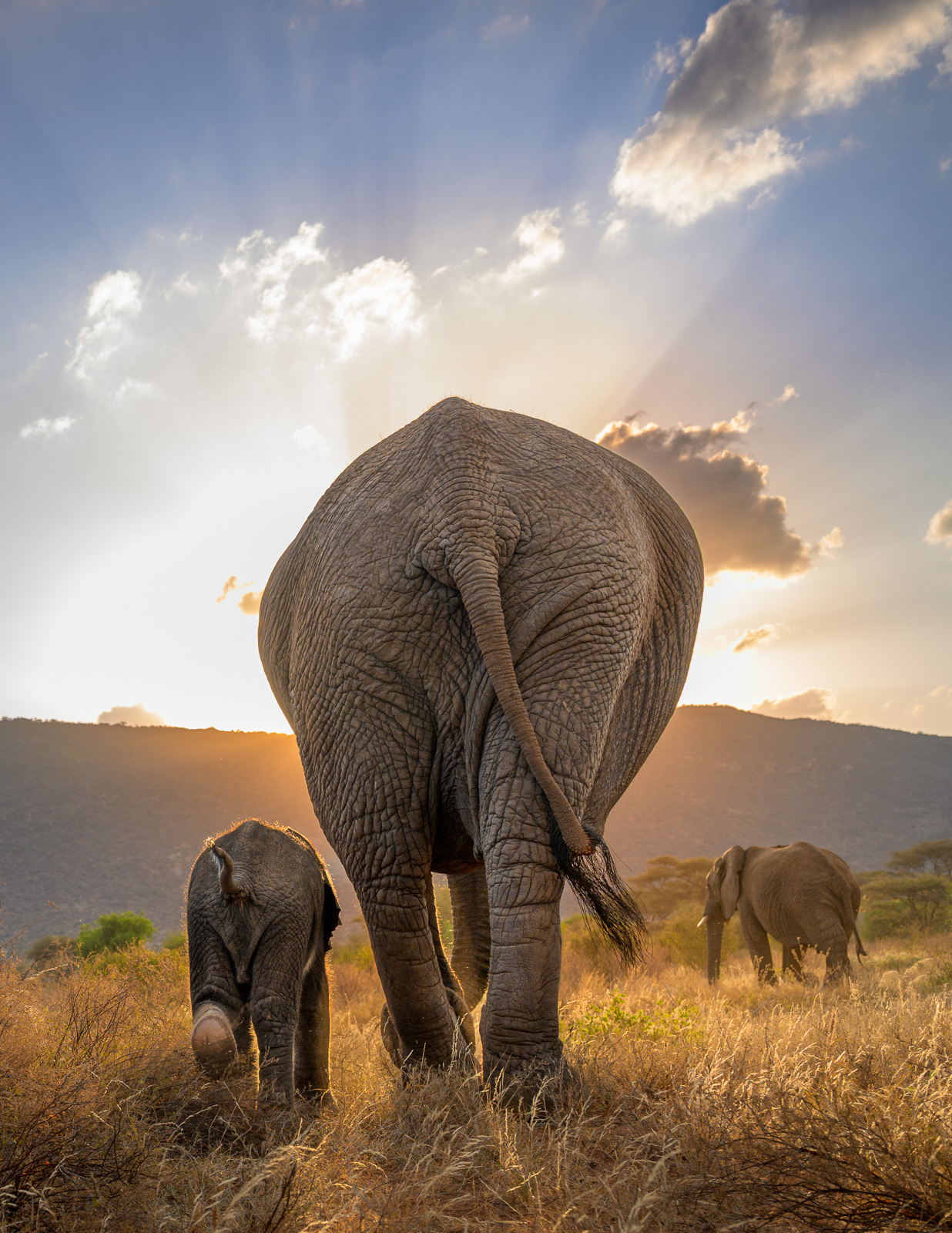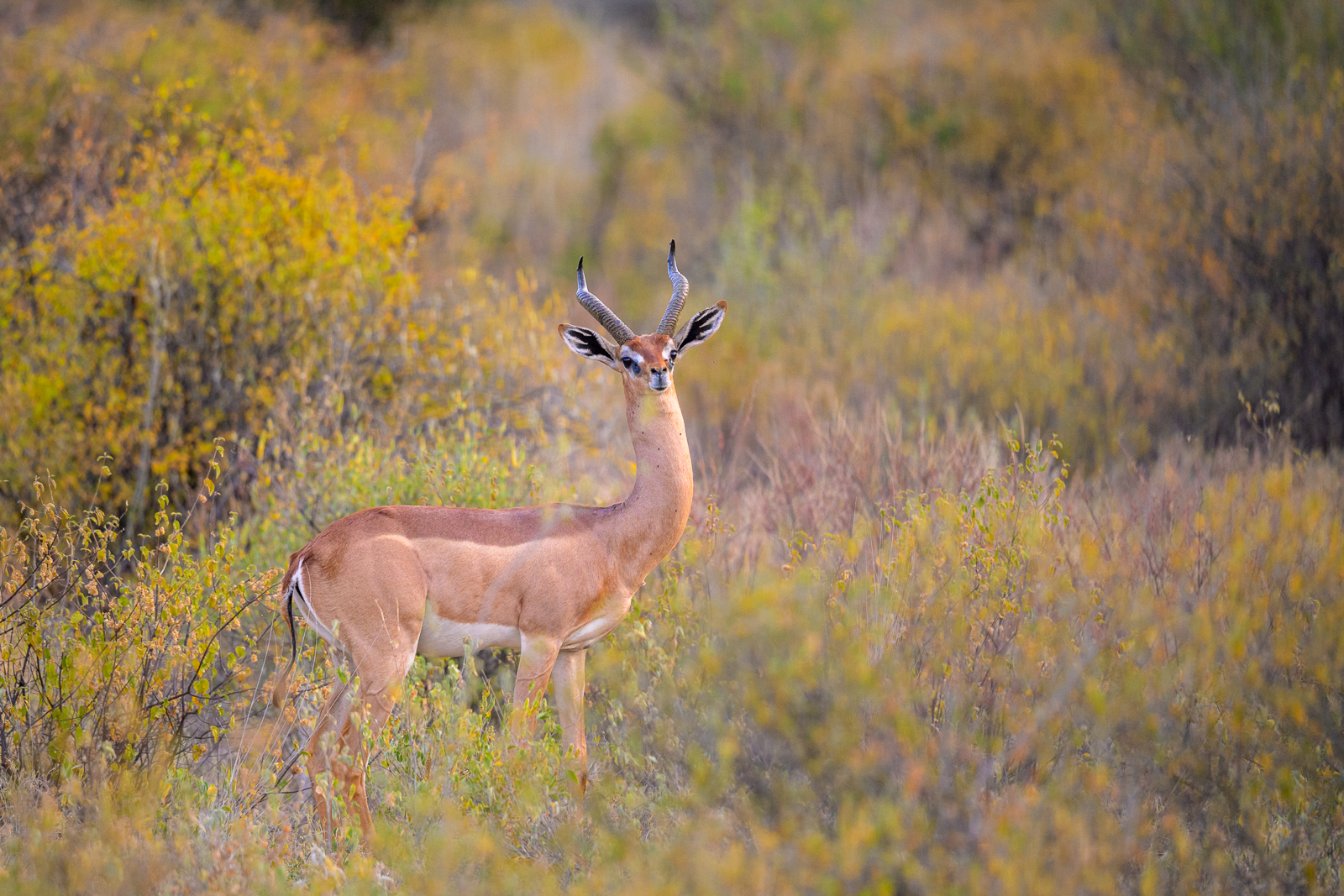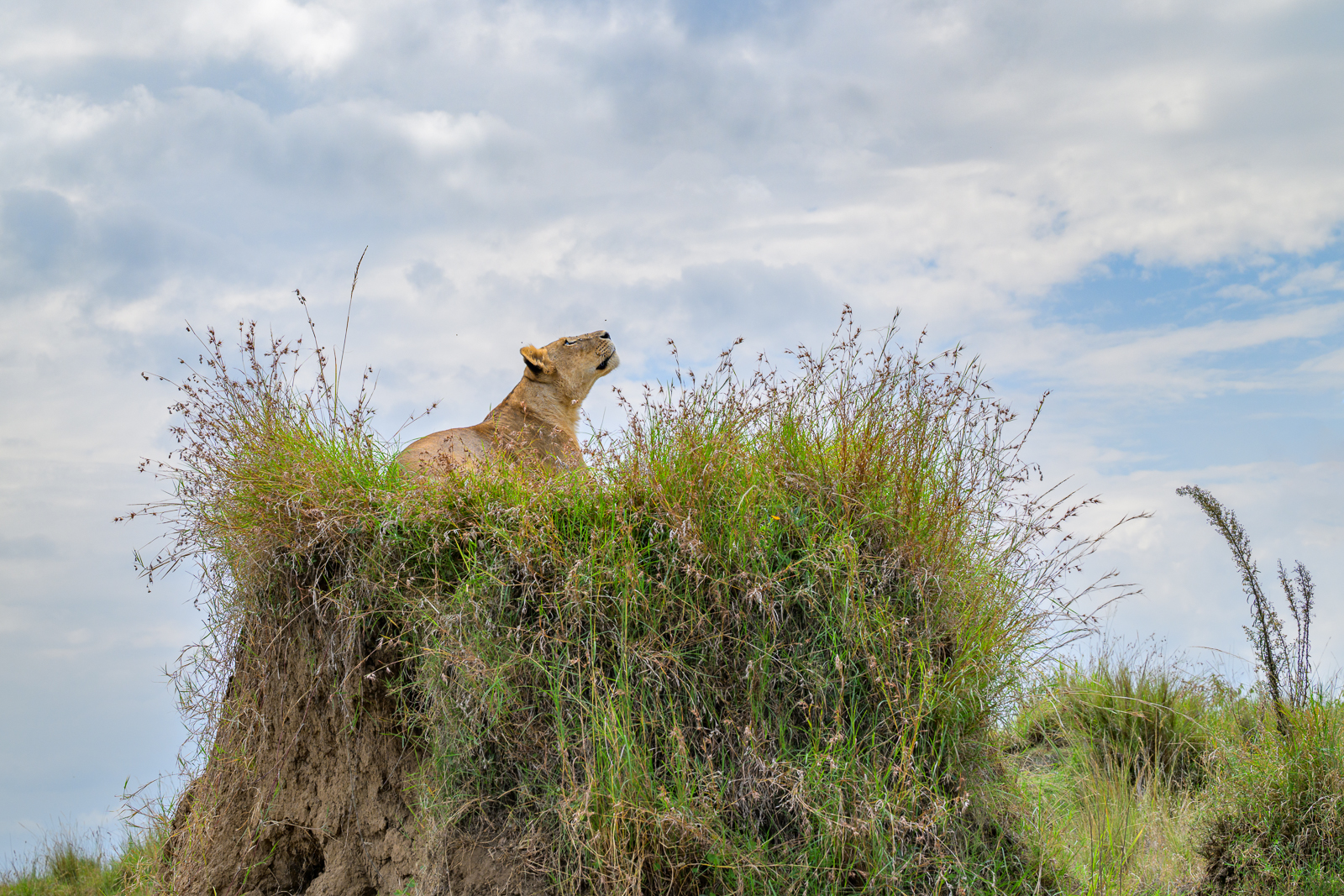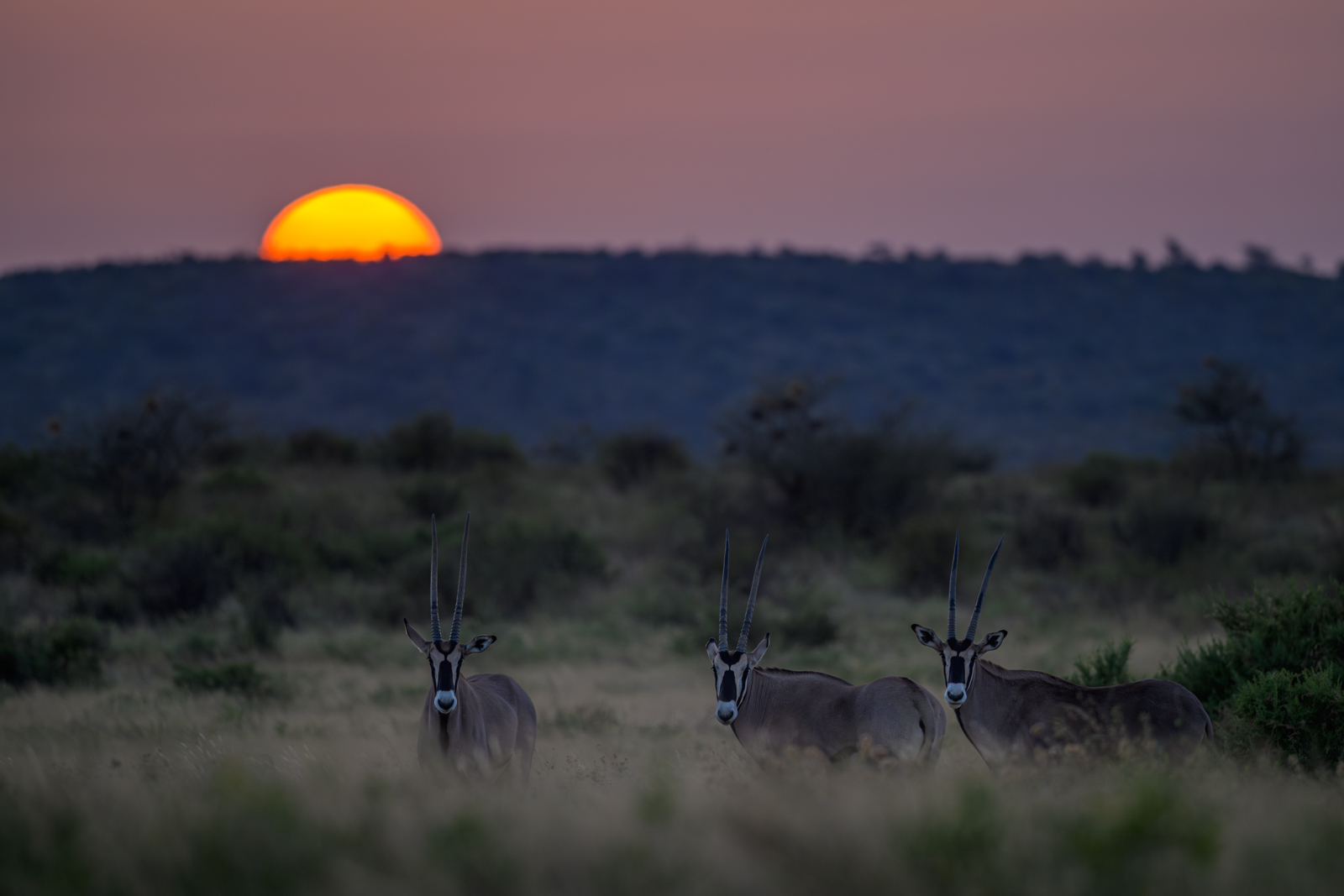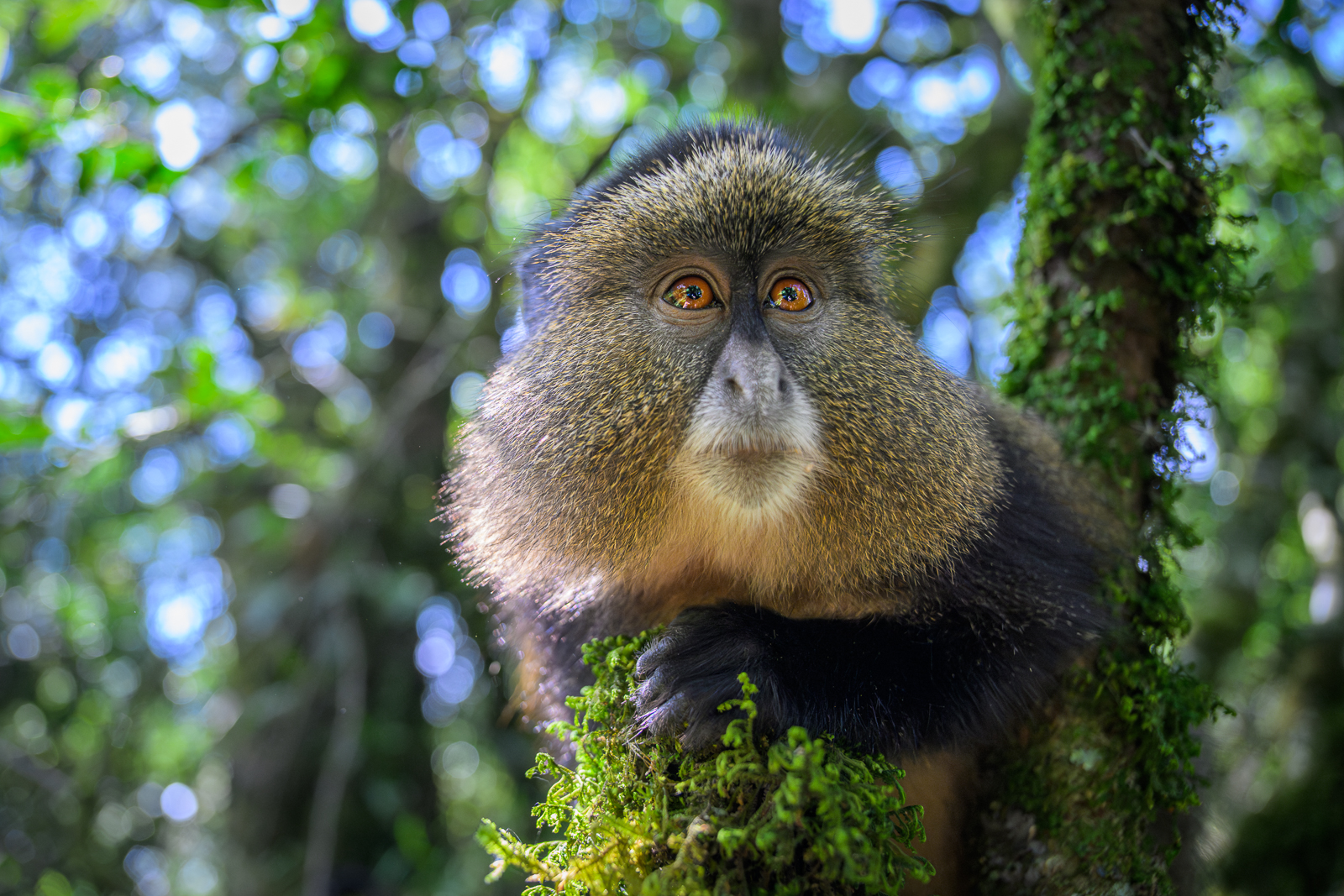Greater Kudu
 Kudu are widespread in eastern and southern Africa, but sparsely populated in their range and difficult to see. I’ve only seen them in Botswana so it was very exciting to observe a small herd in Kenya last month. It was mid-day and the light and setting were tough, but I did my best. Their horns (males only) are among the most striking in the animal kingdom, spiraling up to three full twists and reaching lengths of over 70 inches. But when I think of kudu, I think of Ernest Hemingway, who wrote of them often. During his first African safari, he was obsessed with tracking and shooting a greater kudu, so much so that he famously passed up other trophy opportunities while in pursuit of the elusive, “spiral-horned antelope.” This obsession appears in his nonfiction book Green Hills of Africa, where he writes at length about the kudu’s beauty, grace, and difficulty to hunt. He refers to the greater kudu as a near-mythical creature, calling it “the most beautiful animal” and describing the pursuit as a kind of noble, poetic quest. He often tied the hunt for kudu to deeper themes of masculinity, failure, and artistic struggle. There’s another story that after several failed attempts and days of tracking, Hemingway finally shot a kudu, only to feel a strange mix of pride and sadness, a recurring emotional undercurrent in his reflections on hunting. The kudu became part of his personal mythology, standing as a representation of the ultimate challenge in the African wild. And yes, I was an English literature major in college and read a lot of Hemingway, perhaps sparking the desire to one day make it to Africa. Nikon Z8 with Nikkor 500mm PF lens, ISO 560, f/6.3 at 1/800th of a second.
Kudu are widespread in eastern and southern Africa, but sparsely populated in their range and difficult to see. I’ve only seen them in Botswana so it was very exciting to observe a small herd in Kenya last month. It was mid-day and the light and setting were tough, but I did my best. Their horns (males only) are among the most striking in the animal kingdom, spiraling up to three full twists and reaching lengths of over 70 inches. But when I think of kudu, I think of Ernest Hemingway, who wrote of them often. During his first African safari, he was obsessed with tracking and shooting a greater kudu, so much so that he famously passed up other trophy opportunities while in pursuit of the elusive, “spiral-horned antelope.” This obsession appears in his nonfiction book Green Hills of Africa, where he writes at length about the kudu’s beauty, grace, and difficulty to hunt. He refers to the greater kudu as a near-mythical creature, calling it “the most beautiful animal” and describing the pursuit as a kind of noble, poetic quest. He often tied the hunt for kudu to deeper themes of masculinity, failure, and artistic struggle. There’s another story that after several failed attempts and days of tracking, Hemingway finally shot a kudu, only to feel a strange mix of pride and sadness, a recurring emotional undercurrent in his reflections on hunting. The kudu became part of his personal mythology, standing as a representation of the ultimate challenge in the African wild. And yes, I was an English literature major in college and read a lot of Hemingway, perhaps sparking the desire to one day make it to Africa. Nikon Z8 with Nikkor 500mm PF lens, ISO 560, f/6.3 at 1/800th of a second.


